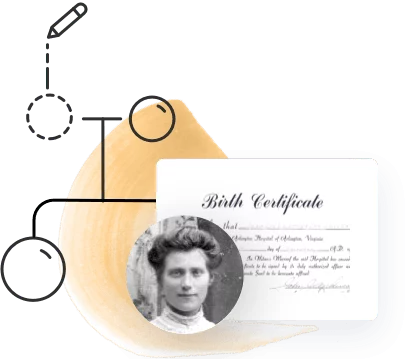
The ultimate dream of many genealogists is to take a heritage trip. There’s nothing quite like walking down the street where your ancestors once lived, standing in their courtyard or former house, visiting their graves, and being able to breathe the air of the place that was once their home.
Unfortunately, making the trip just isn’t practical for some. Perhaps you can’t afford the airfare and other travel expenses. Perhaps you’re not healthy enough to travel, or don’t have the time to commit to a trip like this, or are concerned about finding your way around in a foreign place where you don’t speak the language.
The good news is that the internet has made it possible to “visit” many places all over the world without ever setting foot outside your home.
Here are some ideas for taking a virtual heritage trip that will help you get to know the place your ancestors lived as well as possible without being able to actually visit.
Seeing the sights
One of the fun parts of a heritage trip is getting to travel to a new place, explore a new landscape, and visit significant landmarks and historical sites.
Google Earth
Google Earth is a fantastic way to get a bird’s eye view of a country or city. You can try to find your destination on the globe and zoom in, or search for it using the search function.
You can take a tour of a specific country by choosing one of the Voyager Street View tours, such as “Discover Sweden” or “Discover Scotland.”
You can also click on a specific city and follow the recommended “Points of Interest” to learn about the important sites in that city. You can click on the Points of Interest cards to see more information and photos of a specific site.
360° Virtual Tours
Found a site you want to explore more thoroughly? These days you can find 360° virtual tours of many popular sites and museums all over the world — from the Taj Mahal to the Louvre to the Alhambra. Some of these are available via Google Street View, while others are hosted independently on different websites. Use your mouse or keyboard to navigate these sites, or use VR glasses or VR smartphone headsets for an even more immersive experience!
YouTube
You know all those annoying tourists taking videos and selfies instead of actually experiencing the place they’re in? Well, try to be forgiving toward them, because some of them upload their videos to YouTube, giving you the opportunity to explore cities and sites along with them. There are even “travel vloggers” who travel and film themselves to show their followers all the sights of the places they’re traveling. Look up the destination of your choice and see what YouTube has to offer.
Visiting your ancestors
Seeing the sights is all well and good, but the whole point and purpose of a heritage trip is to connect with your ancestors, right?
Google Street View
If you know the street address of the house where your ancestors lived, enter it into Google Maps and take a look at it from Google Street View. (You can do this by clicking the image of the street that appears at the top of the right-hand panel, or by dragging the yellow person icon on the bottom left corner of the screen to the place you want to see and dropping it there.) Street View allows you to wander up and down the street to get a feel for the immediate environment, or even virtually “stroll” along the nearby streets and parks.
If you don’t know the specific location where your ancestors lived, you can still explore the general area using Google Street View.
Virtual cemeteries
Our Genealogy Expert, Daniel Horowitz, always jokes that cemeteries are the genealogist’s favorite tourist attraction. There’s something very poignant about visiting the place where your ancestors are buried — and of course, gravestones can provide a wealth of genealogical information.
In lieu of being able to visit your ancestors’ graves in person, the next best thing is to use any of the wonderful gravestone resources that already exist online, such as BillionGraves. You can learn more about visiting cemeteries virtually in this webinar by our Researcher, Elisabeth Zetland.
Searching the archives
More and more historical records are being digitized and made accessible online. If you’re a MyHeritage user, you know that we have vast collections of digital archives from all over the world and are constantly adding more — we have almost 12 billion records and counting!
MyHeritage also has automatic translation technology that allows you to search and read information in the language most comfortable to you, even if the record was written in a different language.
That said, there are always benefits to being able to read the original language of the document, so if you want to dig deeper, you may want to consider learning that language.
Learning the language
Aside from the benefits of being able to read records and converse with locals, there is something beautiful about connecting to your ancestors through the language they spoke. These days there are a wealth of language-learning apps, some of them free, such as Duolingo and Memrise. If you’re ready to take it up a level, consider finding a language exchange partner via a site like Conversation Exchange.
In summary
It’s true that there is nothing like the experience of standing on the same ground where your ancestors once stood. But thanks to modern technology, when that’s not an option for you, you can still explore and learn a great deal about the places your ancestors once lived from the comfort of your home.



